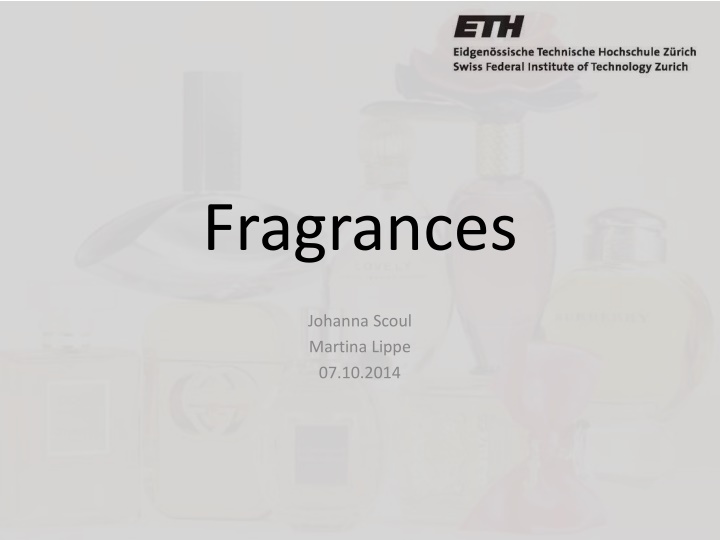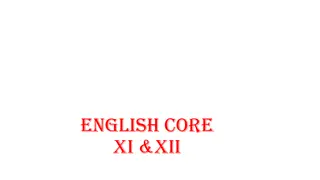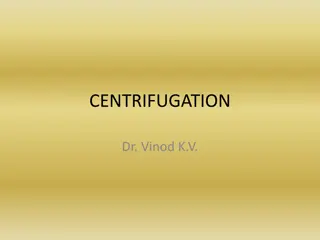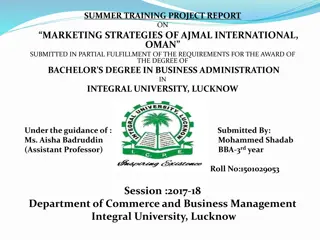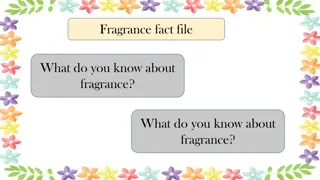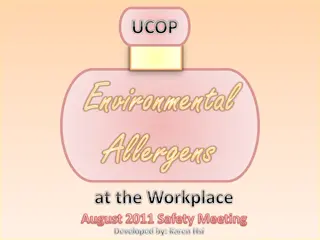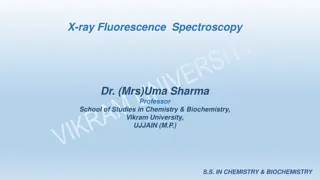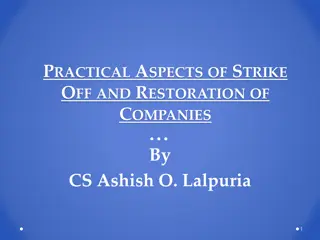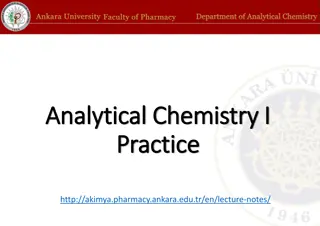Analytical Strategies for Identifying Off-Note in Fragrances
In fragrance production, detecting off-notes is crucial. This case study explores issues with menthone distillation, suggesting strategies like preparative gas chromatography and GC-sniffing technique. Correct identification leads to enhanced fragrance quality.
Uploaded on Oct 05, 2024 | 1 Views
Download Presentation

Please find below an Image/Link to download the presentation.
The content on the website is provided AS IS for your information and personal use only. It may not be sold, licensed, or shared on other websites without obtaining consent from the author.If you encounter any issues during the download, it is possible that the publisher has removed the file from their server.
You are allowed to download the files provided on this website for personal or commercial use, subject to the condition that they are used lawfully. All files are the property of their respective owners.
The content on the website is provided AS IS for your information and personal use only. It may not be sold, licensed, or shared on other websites without obtaining consent from the author.
E N D
Presentation Transcript
Fragrances Johanna Scoul Martina Lippe 07.10.2014
Case Study At the beginning of the distillation of menthone made from natural menthol there is a green/mossy note. The off-note is in the first distillation fraction -> lower boiling point than menthone Menthone made from artificial menthol does not have this issue. With a GC-MS analysis there is no peak visible which could explain the smell.
What is the off-note? 1.) The off-note is a totally different species than menthone Very low concentration and is therefore not detected 2.) The off-note is an isomer of menthone 4 Stereoisomers Menthones: minty odor Isomenthones: slightly musty odor Diastereomers can be excluded as they should be separable by GC Enantiomer: make a chiral GC -> Case 1.) H. Surburg; J. Panten,Common Fragrance and Flavor Materials: Preparation, Properties and Uses, 5thedition, Wiley, 2006, p. 63.
Analytical strategies Get the off-note in good purity Preparative gas chromatography Purification method Spinning-band distillation Difference in boiling point
Preparative GC Separate components for more advanced use Requires a column with a larger diameter A detector is needed FID (Flame Ionization Detector) -> for carbon ECD (Electron Capture Detector) -> for halogenated compounds NPD (Nitrogen Phosphorus Detector) -> for nitrogen and phosphorus Human nose -> GC sniffing technique
GC sniffing technique Splitter at the outlet of the GC column Detector Sniffing device -> get the retention time of the off-note http://sim-gmbh.de/en/gcms/sim-olfactory-detector.html http://resources.schoolscience.co.uk/ICI/16plus/smells/smellsch3pg2.html
GC/MS-detection GC Mostly apolar stationary phase Separates according to boiling point -> possible to limit the mass range of the off-note MS Mostly quadrupole High mass flow rates possible Integration time for one mass is very short For better sensitivity the mass range should be limited -> Selected ion monitoring Normally: 10-10g, can be improved by a factor of 100 -> maybe possible to see the off-note in the spectrum
Further Suggestions Different Ionisation Method (normally: electron impact) Chemical ionisation with negative ions Different mass spectrometer FT-ICR GC-GC Two columns Interface that samples or collects the effluent from the first column and introducing it to the second column Two separation mechanisms or temperatures -> Separation is highly selective http://www.pg.gda.pl/chem/CEEAM/Dokumenty/CEEAM_ksiazka/Chapters/chapter6.pdf
Spinning-band distillation Fractionating columns improves the separation by helping the mixed vapours to cool, condense and vaporize again (Raoult s law) Spinning-band distillation: use of a helical, rotating band (teflon or metal) http://en.wikipedia.org/wiki/Fractionating_column http://www.brinstruments.com/fractional-distillation/spinning-band-distillation.html
Strategies Identification of the chemical structure of the off-note 1) NMR spectroscopy: - Information about the chemical structure and chemical environment of the molecules. But - We need mg to make the analysis.
Strategies 2) Tandem mass spectrometry (MS/MS): - Triple quadrupole mass spectrometer q = cell for collision-induced dissociation - Examine selectively the fragmentation of particular ions in a mixture of ions. - Structural information => product ion scan. Inert gas for collision Daughter ion Parent ion Collision-induced fragmentation
Strategies 3) Gas Chromatography Infrared Spectrometry (GC-IR): - Separation of a mixture by a gas chromatograph. - The fractions containing a single compound are then steered towards a FTIR-spectrometer. Allows to identify isomers
Strategies Advantages: Very sensitive - Light pipes are heated in order to rid condensation and maximize path length for enhanced sensitivity - The interferogram can be obtained in a very brief time using a matrix isolation: Compared with the light pipes, the limit of detection can be reduced by a factor of about 100 Obtaining clear spectra of a sample ng
Strategies Disadvantages: Very expensive - Matrix isolation needs a gold-flat and 10-12 K - Detector - highly sensitive
What are odor Threshold values (OTV)? The lowest concentration of a certain odor compound that is perceivable by the human sense of smell. Can be expressed as a concentration in water or in air. Optical isomers can have different detection thresholds and can be less perceivable for the human nose.
Odor threshold values Two major types of flavor thresholds can be distinguished: - The absolute odor threshold: The minimum quantity of an odorant to become perceptible. - The differential threshold: The minimum difference in odorant concentration that can be perceived as distinct.
Types of measurement Psychophysical measurements: - Single values obtained from a series of repetead measurements carried out with one or several individuals.
Types of measurement The dynamic dilution olfactometry (EN13725 standard): Odor concentration and odor threshold determination (ou/m3= odor units per cubic meter of air) - Test sample: Ambient air, sampled continuously, batchwise from an odor-emitting source or an odorant-saturated gas. - Olfactometer presents the odour sample diluted with odour- free air at precise ratios, to a panel of human assessors. - The examiners selected with a standardized procedure performed using reference gases.
Types of measurement GC sniffing technique: - Injection of different dilutions of a sample into the gas chromatograph until the perception of the substance at the sniffing port. - When the detector indicates its elution from the GC column - At the correct retention time.
